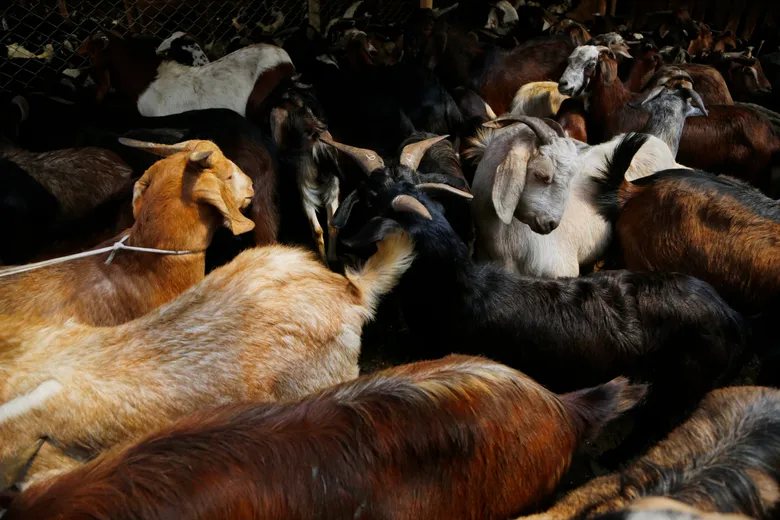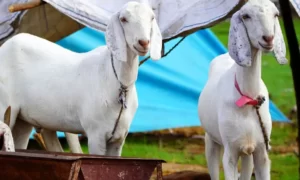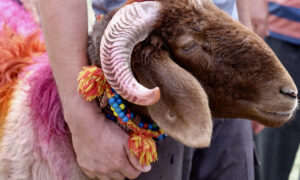Animal Sacrifice in Countries: Understanding Cultural Practices
Introduction
Animal sacrifice is a cultural practice that has existed for centuries and holds significant meaning in various countries around the world. While it may seem unfamiliar or even controversial to some, it is essential to approach this topic with an open mind and a willingness to understand different cultural perspectives. In this article, we will explore the concept of animal sacrifice, its historical and cultural significance, as well as its contemporary practices in different countries.
Table of Contents
- What is Animal Sacrifice?
- Historical Significance
- Ancient Rituals
- Religious Practices
- Cultural Contexts
- Africa
- Asia
- Europe
- Americas
- Contemporary Animal Sacrifice
- Rituals and Ceremonies
- Legal and Ethical Considerations
- Animal Welfare Concerns
- Regulation and Control
- Alternatives and Evolving Practices
- Understanding Cultural Perspectives
- Symbolism and Beliefs
- Community Cohesion
- Controversies and Debates
- Ethical Dilemmas
- Cultural Relativism
- Animal Sacrifice and Tourism
- Cultural Tourism
- Balancing Tradition and Animal Welfare
- Conclusion
- FAQs
What is Animal Sacrifice?
Animal sacrifice refers to the act of slaughtering animals as part of a religious, spiritual, or cultural ritual. It involves offering the life of an animal to a deity or higher power, symbolizing devotion, gratitude, purification, or atonement. Animal sacrifices can take various forms, such as the slaughtering of livestock, poultry, or other animals. The practice is deeply rooted in the beliefs and traditions of many cultures worldwide.
Historical Significance
Ancient Rituals
Animal sacrifice has a long history and was prevalent in ancient civilizations. In ancient Egypt, animals were sacrificed to appease gods and ensure fertility and prosperity. The Aztecs in Mesoamerica performed elaborate ceremonies involving animal sacrifice as offerings to their deities. Similarly, the ancient Greeks and Romans incorporated animal sacrifices into their religious rituals as a means to honor their gods.
Religious Practices
Religious traditions across the globe have incorporated animal sacrifice as part of their practices. In some branches of Hinduism, sacrifices are performed during specific religious festivals, reflecting devotion and seeking divine blessings. In Santeria, an Afro-Caribbean religion, animal sacrifice is seen as a way to establish a connection with ancestral spirits. It is essential to recognize that these practices are deeply embedded in the cultural and religious fabric of these societies.
Cultural Contexts
Africa
In various African cultures, animal sacrifice plays a vital role in religious ceremonies and cultural traditions. For instance, in Yoruba culture, sacrificial rituals are performed to honor deities known as Orishas. The Maasai tribe in East Africa conducts ceremonies involving animal sacrifice to mark significant life events and seek blessings from their gods.
Asia
Animal sacrifice is practiced in different forms in Asian countries. In Nepal, the Gadhimai festival involves the sacrifice of thousands of animals to the goddess Gadhimai. This event, held every five years, is considered a sacred ritual by devotees. In Bali, Indonesia, the Hindu-majority population performs animal sacrifices as offerings during religious ceremonies and temple festivals.
Europe
Although animal sacrifice is less prevalent in contemporary European societies, historical accounts show that it was an integral part of ancient European religions. Celtic tribes in Europe performed animal sacrifices to honor their deities and ensure a prosperous harvest. Today, some Pagan and reconstructionist groups seek to revive these ancient practices.
Americas
In certain indigenous cultures in the Americas, animal sacrifice remains an important aspect of spiritual ceremonies. For example, among the Native American tribes, rituals involving animal sacrifice are conducted to express gratitude, seek spiritual guidance, or celebrate significant events.
Contemporary Animal Sacrifice
Rituals and Ceremonies
Contemporary animal sacrifice practices vary depending on the cultural and religious context. They are often performed during specific festivals, religious holidays, or life cycle events. These rituals involve meticulous preparations, prayers, and the slaughtering of animals according to specific guidelines and customs.
Legal and Ethical Considerations
The practice of animal sacrifice raises legal and ethical questions in many countries. While some nations allow it as part of religious freedom, others impose restrictions or outright bans due to animal welfare concerns. Balancing the cultural significance with animal welfare considerations remains a challenging task for lawmakers and communities alike.
Animal Welfare Concerns
Regulation and Control
As animal sacrifice attracts scrutiny from animal welfare organizations and the general public, various countries have implemented regulations to ensure humane treatment of animals during these rituals. These regulations often focus on minimizing suffering, ensuring proper handling, and appropriate slaughter methods.
Alternatives and Evolving Practices
In response to animal welfare concerns, some communities have adopted alternative practices that symbolically represent animal sacrifice without causing harm. These alternatives, such as using fruits or vegetables as symbolic offerings, strive to preserve the cultural significance while respecting animal rights.
Understanding Cultural Perspectives
Symbolism and Beliefs
Animal sacrifice holds symbolic meaning within different cultures. It represents a connection between the physical and spiritual worlds, expressing gratitude, seeking blessings, or fulfilling religious obligations. Understanding these symbolic meanings is crucial in appreciating the cultural perspectives surrounding animal sacrifice.
Community Cohesion
Animal sacrifice rituals often foster a sense of community and togetherness. They provide an opportunity for individuals to come together, strengthen social bonds, and participate in shared cultural experiences. Such rituals serve as a unifying force within communities, reinforcing cultural identity and traditions.
Controversies and Debates
Ethical Dilemmas
The practice of animal sacrifice raises ethical questions and sparks debates surrounding the treatment of animals. Opponents argue that it infringes upon animal rights and promotes unnecessary harm, while proponents assert that it is an integral part of their religious or cultural heritage. Balancing these conflicting viewpoints is an ongoing challenge for societies.
Cultural Relativism
Understanding and respecting cultural relativism is vital when discussing animal sacrifice. Cultural relativism acknowledges that different cultures have their own values and practices, which may differ from one’s own. It encourages dialogue, empathy, and a non-judgmental approach to appreciate diverse cultural perspectives.
Animal Sacrifice and Tourism
Cultural Tourism
In some countries, animal sacrifice rituals attract tourists who are interested in experiencing different cultures and traditions. Cultural tourism can provide economic benefits to local communities but must be managed responsibly to avoid exploitation and to ensure the well-being of both animals and participants.
Balancing Tradition and Animal Welfare
Communities practicing animal sacrifice face the challenge of striking a balance between preserving their traditions and addressing concerns for animal welfare. This often involves open discussions, education, and exploring alternatives that retain the essence of the ritual while reducing harm to animals.
Conclusion
Animal sacrifice is a complex and multifaceted topic that requires careful consideration and understanding of cultural practices. While it may evoke strong emotions and differing opinions, approaching the subject with respect and open-mindedness allows for meaningful discussions. By exploring the historical, cultural, and contemporary aspects of animal sacrifice, we can foster greater awareness and appreciation for the diverse practices and beliefs around the world.
FAQs
- Is animal sacrifice legal in all countries? Animal sacrifice legality varies across countries. Some nations allow it as part of religious freedom, while others have restrictions or bans due to animal welfare concerns.
- Are there alternatives to animal sacrifice? Yes, some communities have adopted alternative practices that symbolically represent animal sacrifice without causing harm, such as using fruits or vegetables as offerings.
- Do all religions practice animal sacrifice? No, not all religions practice animal sacrifice. It is primarily found in specific branches of certain religions and cultural traditions.
- How do animal sacrifice rituals impact communities? Animal sacrifice rituals often foster a sense of community and togetherness, strengthening social bonds and reinforcing cultural identity within communities.
- What is the role of animal sacrifice in contemporary society? Animal sacrifice remains an important cultural and religious practice for many communities, but it also faces increasing scrutiny and ethical debates regarding animal welfare.
Read More:Animal Sacrifice Eid: Understanding the Tradition and Ethics




















